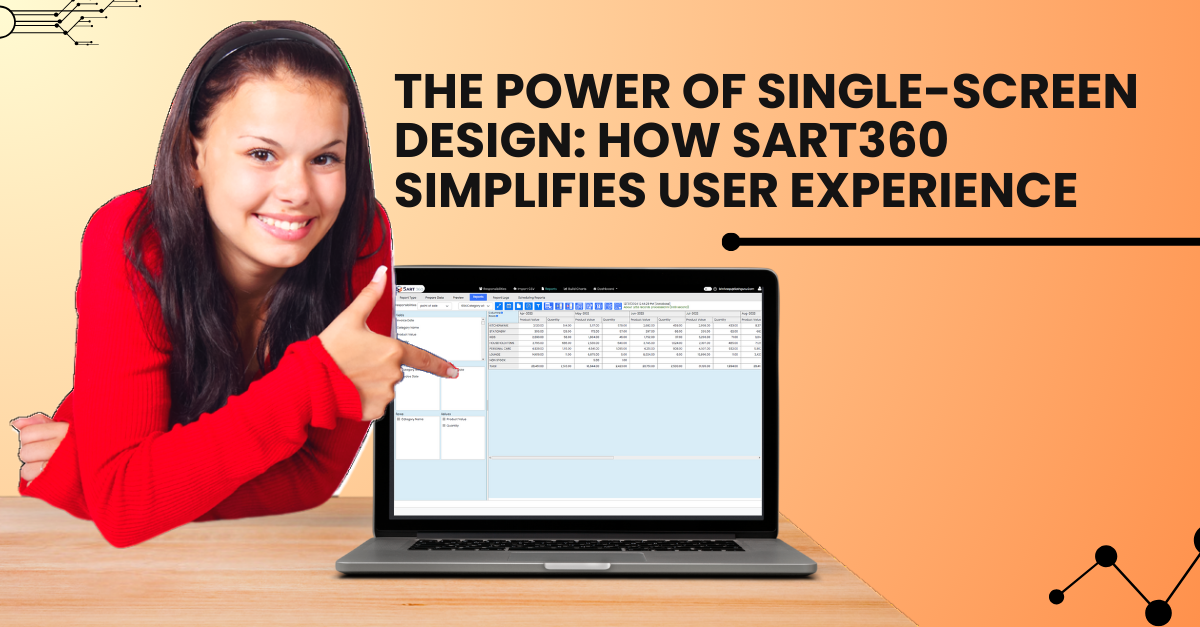In a world full of complex software solutions, there is something refreshingly intuitive about a single-screen interface. At Sathguru Soft, we have taken this simplicity to heart with SART360, our flagship data driven decision support tool that is entirely built around a single-screen experience. Whether users are creating reports or diving into analytics, everything they need is right in front of them, no extra tabs, no nested menus, and no endless clicks.
Why is a single-screen interface so powerful? Here is a closer look at how it enhances the user experience and the thoughtful design that makes it possible.
Single-Screen Design: A Gateway to User Confidence
When users open a new tool, one of their biggest hurdles is navigating the interface. Every click, every screen change, every window that opens and overlaps creates a learning curve. With a single-screen design, however, users have the advantage of seeing every action, option, and enhancement tool right within their line of sight.
In SART360, this approach is deliberate. By providing all report creation and analytics features on one screen, we empower users to work confidently. There is no need to memorize multiple pathways or worry about getting lost in a maze of options. Users know exactly where they are and have everything, they need at their fingertips; an experience that feels intuitive from the start and strengthens their confidence with every use.
“Simplicity on a Single Screen – Empowering Every User with Clarity and Confidence.”
A UI/UX Challenge That is Worth the Effort
Designing a single-screen solution is not as simple as putting all the elements in one place. It requires careful consideration of layout, spacing, and how each feature is accessed and highlighted. This layout challenge is amplified in a tool like SART360, where users need to access multiple features for reporting and analytics, each with their own set of options.
At Sathguru Soft, our in-house UI/UX team embraced this challenge with creativity and precision. They worked through multiple design iterations to ensure that every element in SART360 had a logical flow. They focused on balancing visibility and accessibility without overwhelming the screen. The result? A clean, efficient design that does not sacrifice depth for simplicity; a true accomplishment that underscores the art and science of single-screen design.
Enhancing User Productivity and Flow
With everything available on a single screen, users experience an uninterrupted workflow. They can adjust data fields, refine filters, or add visual elements to their reports or analytics in one place. This setup minimizes the distractions that come with switching screens and keeps the user in a steady flow, where actions are intuitive and responses immediate. Every second saved on navigation is a second gained for productivity, allowing users to focus on what they are here to do, generate insights and make informed decisions.
Empowering Users of All Skill Levels
Single-screen design is especially empowering for users who may not be tech-savvy. By eliminating complex navigation paths and hidden menus, we make the learning curve flatter and the tool more accessible to everyone. From experienced analysts to citizen developers, anyone can start using SART360 with ease and confidence, making data-driven decision-making a truly inclusive process.
The SART360 Promise: Simplicity Meets Sophistication
In an era where software often leans toward added complexity, SART360 stands out as a tool that embraces simplicity. By committing to a single-screen design, we have created a space where users can feel empowered and productive. It is an approach that might seem straightforward, but behind it lies the careful work of a dedicated UI/UX team who understands the profound impact of design on user experience. With SART360, we are delivering more than just a software tool; we are delivering confidence, efficiency, and an experience that users can rely on day in and day out. This single-screen approach is not just a feature, it is a promise to every user that simplicity and sophistication can indeed go hand in hand.

